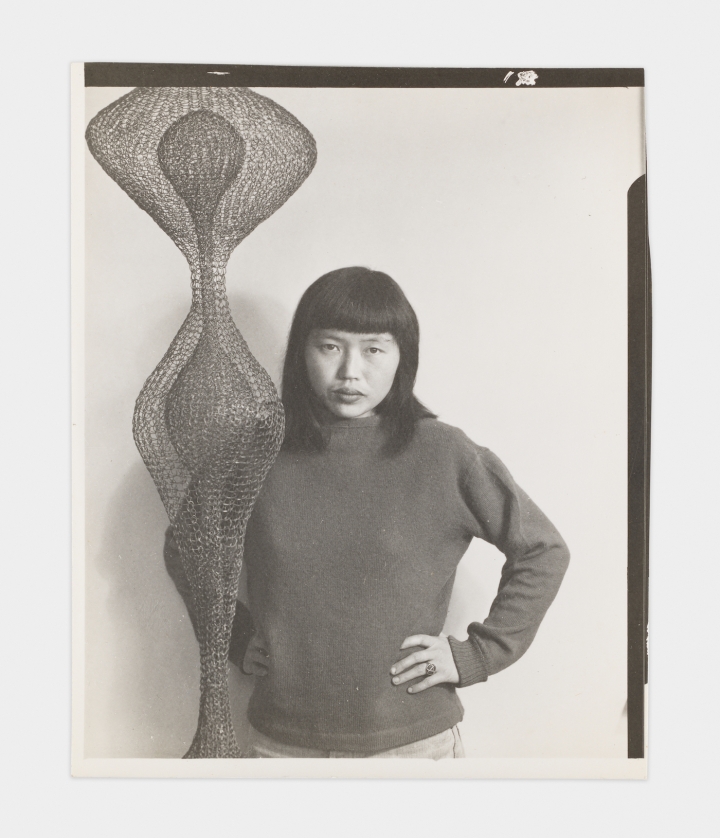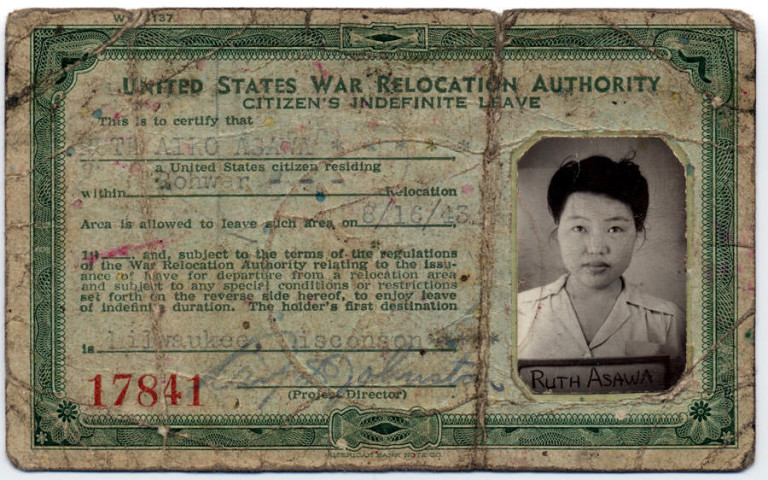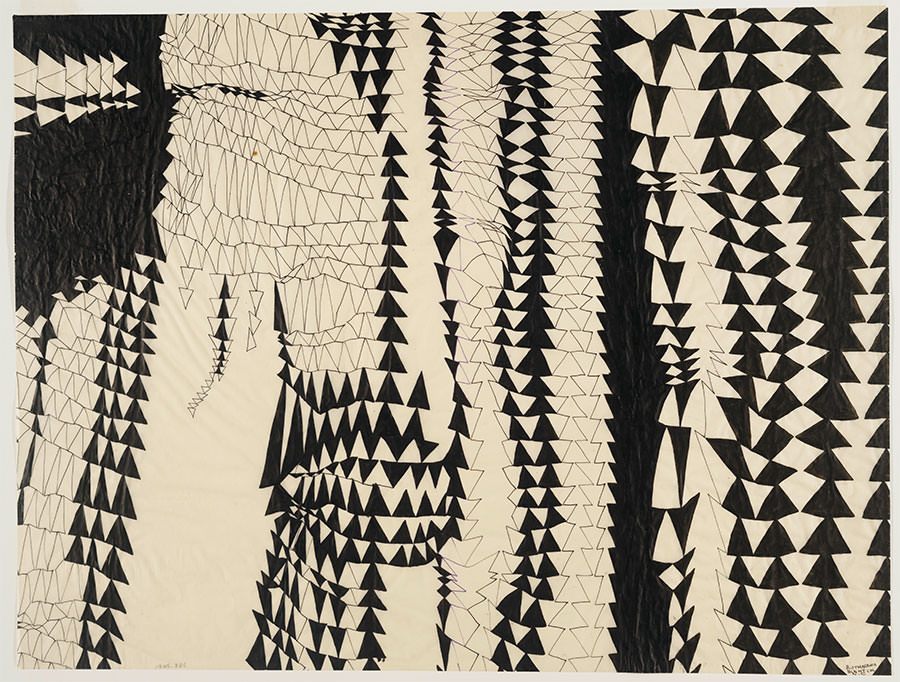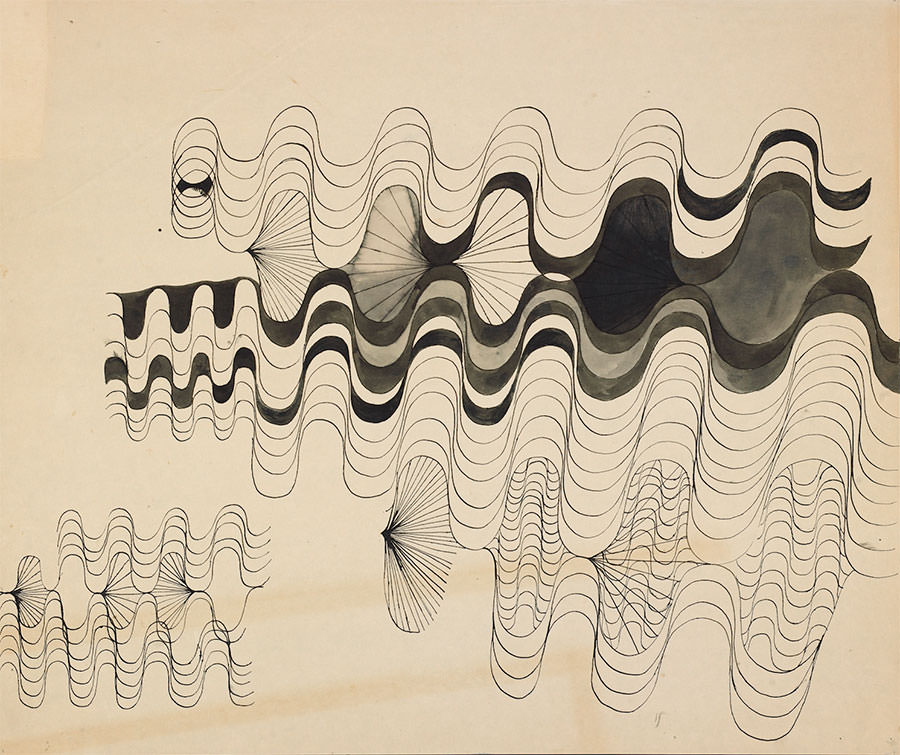FEMALE STUDY: RUTH ASAWA - RACISM AND THE FEMALE DOMAIN
Shot on my iphone at the David Zwerner Gallery
I recently caught Ruth Asawa's first solo exhibition at the David Zwirner Gallery in Chelsea. In the spirit of my current negative sentiment toward the lives we lead on the internet, I was happy to see artwork in real life, as opposed to my usual 1:00 am internet tours of artists' works.
I first discovered Ruth Asawa in 2015, while conducting research for a post on Eva Hesse. Asawa's most recognizable work incorporated wire. Considering she began in the 1950s, her use of such an "ordinary" medium put Asawa ahead of the curve, as it wasn't until the late 1960s and throughout the 1970s that artists in the United States and Europe were using ordinary objects to make art in what is now referred to as the post-minimalism period.
Portrait by Imogen Cunningham.
Ruth and Imogen were good friends. I ❤️ Imogen Cunningham
Ruth Asawa was born in 1926, in Norwalk, California, roughly 10 miles inland from where I grew up, at a time when Southern California was mostly rural farmland. Asawa's parents immigrated to the US from Japan, and upon arrival in America, her father took work as a farmer. In 1942, during the Second World War, sentiments toward Japanese immigrants had plummeted due to Japan's attack on Pearl Harbor, so Asawa's 60 year old father was detained by the FBI and taken to New Mexico for nearly two years. At age 16, Asawa, her mother, and five other siblings were forced to live in a converted horse stall at the Santa Anita Racetrack-cum-temporary Japanese Internment Camp, north east of Downtown Los Angeles. The location was usurped by the federal government and subsequently labeled an "assembly center" for eight months while more permanent residences were constructed. Throughout their six-month stay at the Racetrack, the Asawa family did not know where their father was, or if he was even alive.
Being a Los Angeles history buff, I'm shocked I had never known that the Santa Anita Racetrack served as an assembly center. I knew of Manzanar off the 5 freeway in the Southern Central Valley, but I was completely unaware that such a thing happened in my own [albeit historical] backyard.
Once permanent housing was built for the Japanese throughout the country, Asawa's family was sent to the Rohwer War Relocation Center in a rural part of Arkansas, where nearly 5,000 displaced Japanese-Americans from California were forced to live. During this time, much like Trump's muslim ban, any Japanese American abroad was denied entry to the US. Ruth's eldest sister had been visiting family in Japan at the time of their internment, so she had to stay in Japan through the remainder of the war.
In her youth, Ruth Asawa had previously been put to work on her family's farm, but once she was interned, she started to draw. According to Asawa's biography, she was motivated by Disney animators also interned at Santa Anita Racetrack who taught art in the grandstands to anyone interested. (Disney studios then, were about 5 miles from the racetrack).
At Rohwer, Asawa continued to draw, and despite the inhumane conditions, she was able to continue her high school education and graduated after living interned for 18 months.
After graduating high school, Asawa was granted a scholarship in 1943 through the Japanese American Student Relocation Council, which was founded by a Quaker group in the Midwest. The scholarship allowed Ruth to leave Rohwer to attend college in Milwaukee, Wisconsin. Asawa's family was not as fortunate, and continued to live at Rohwer until 1945. The whole family was not reunited again until 1948.
Asawa's ID that allowed her to leave Rohwer. This ID is now part of the Smithsonian’s National Portrait Gallery collection. Link to Source
Continuing her education, Asawa attended Black Mountain College in Asheville, North Carolina from 1946-1949. Because of the instability in Germany caused by WWII, the Bauhaus School in Dessau closed, and many of their teachers joined the diaspora of Europeans displaced from the war. Josef Albers, (one of my favorites; you can read an article I wrote about him here), sought refuge at Black Mountain College. So now we get this insane recipe: several talented artists working in the mostly conservative South, brought together by war; and not surprisingly, lots of magic happens. (One day I will do a lengthy article about Black Mountain College because it rules).
At Black Mountain College Asawa studied under Albers in his design courses, where she says she learned, "the importance of relationships and the relativity of perception."
Ruth Asawa's work made under Josef Albers
But here's where it gets really cool: There is a current exhibition at the Guggenheim that shows Albers' photos from his frequent trips to Mexico. The exhibition correlates these trips to his work and how his experiences of the country influenced Albers during this period. On one of these trips, Asawa accompanied Albers to Toluca, Mexico where she saw women weaving baskets out of galvanized metal and took interest in their technique. Having shown curiosity, she was taught to loop weave by one of Albers' colleagues during her stay. Asawa retuned home, and after graduating, started creating wire sculptures using the loop-weaving technique she learned in Toluca.
Side Note - This is when I especially love living in New York. I've been reading about Josef Albers for over a decade, I then learn about Ruth Asawa completely independently of Albers, and somehow it all comes together in exhibitions that I can actually see in real life. Yes to living in the real world.
At Black Mountain College, Asawa also studied under Buckey Fuller, a mathematician-turned sculptor who used ordinary objects like bobby pins, and various readily available household items to build geodesic domes, and other three dimensional sculptures.
The combination of Albers and Fuller's teaching is very apparent in Asawa's work, yet what makes her work unique is that she applied a folk technique to the theories and methods she was taught, which was taken directly from her personal experience. (SO COOL).
Portrait by Imogen Cunningham
Asawa's wire weaving received national attention almost immediately following her graduation from Black Mountain College, but given that it was the 1950s, critics demeaned her work, calling it "domestic." Idk, I guess people think supended baskets that don't actually hold things are just women's work? And not helping her credibility even further, Asawa got married in 1960 and had 6 children, so critics continued to discredit her, calling her a "homemaker."
From here it looks like Asawa moved to San Francisco, where she began arts programs for children. During her early years in San Francisco, she installed her first public sculpture in Ghirardelli Square, a bronze cast Mermaid nursing a baby mermaid. Of course, because of the 'feminine content,' critics again discredited it, calling the sculpture a "suburban lawn ornament."
Maybe this is why Ruth Asawa's first solo exhibition happened just last month. It's about fucking time, she's only been working for SIXTY YEARS. So infuriating. I know right now we talk a lot about intersectionality, but I just want to take a moment here to recognize something: Unlike LGBTQ people, women as a gender have had a 'place in society' since the beginning of modern humanity, yet even now, a woman who has been working for over 60 years is getting her first solo exhibition in New York. Sure, a piece here and there at the Whitney or SFMOMA is an achievement, but I've studied plenty of men from this era who had solo exhibitions right after they became well-known. (I just wrote an article about Claes Oldenberg, an artist who fucking sewed stuff for crying out loud... how is that not considered 'domestic?' – oh right, he's a man... never mind he often had the help of his ex-wife in sewing the sculptures.) RARRR, makes me so mad.
But I digress, at least her work is being shown. Below are pictures I took on my iphone from the exhibition. Finally, Ruth Asawa is getting the recognition she deserves.

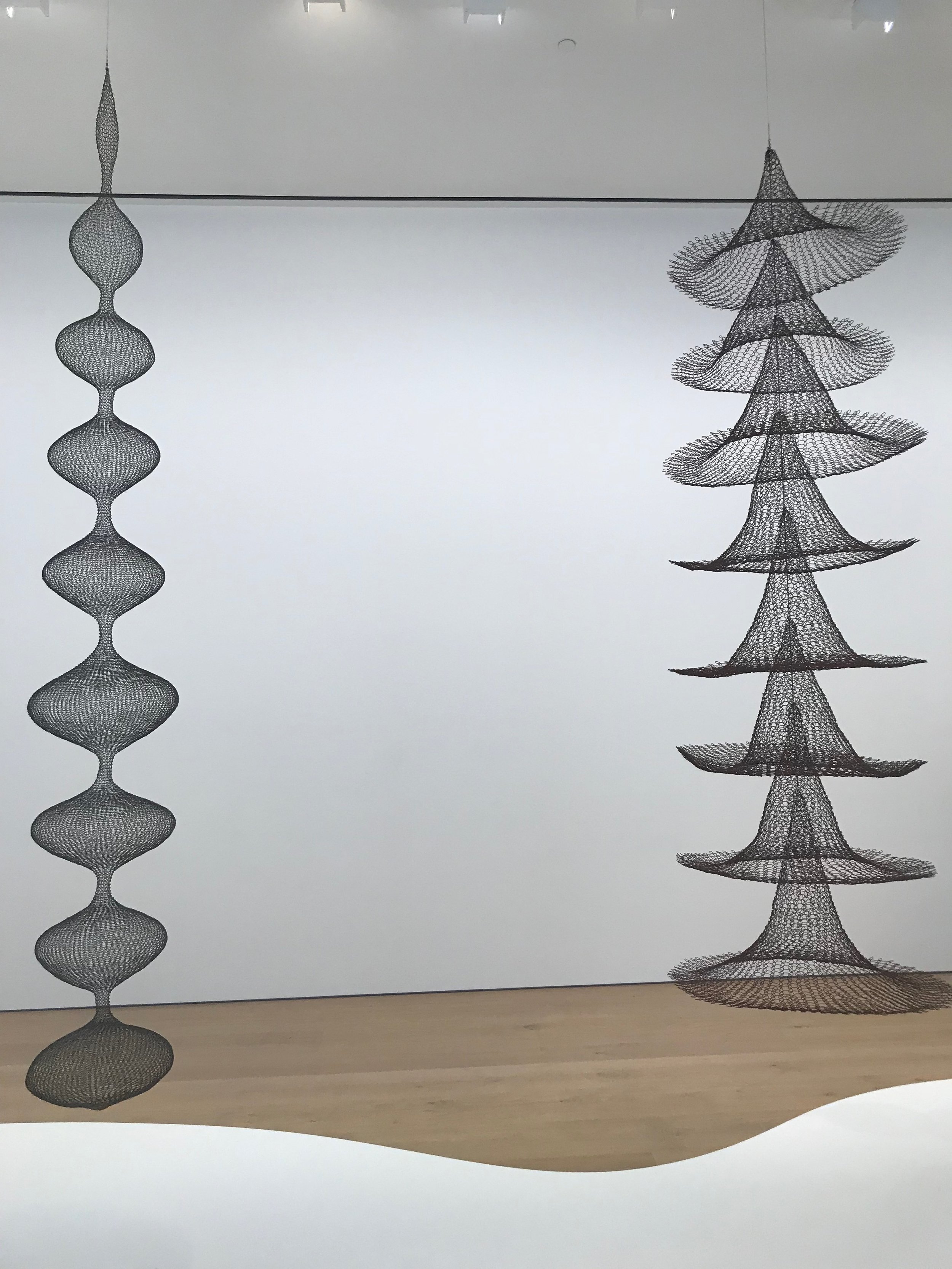

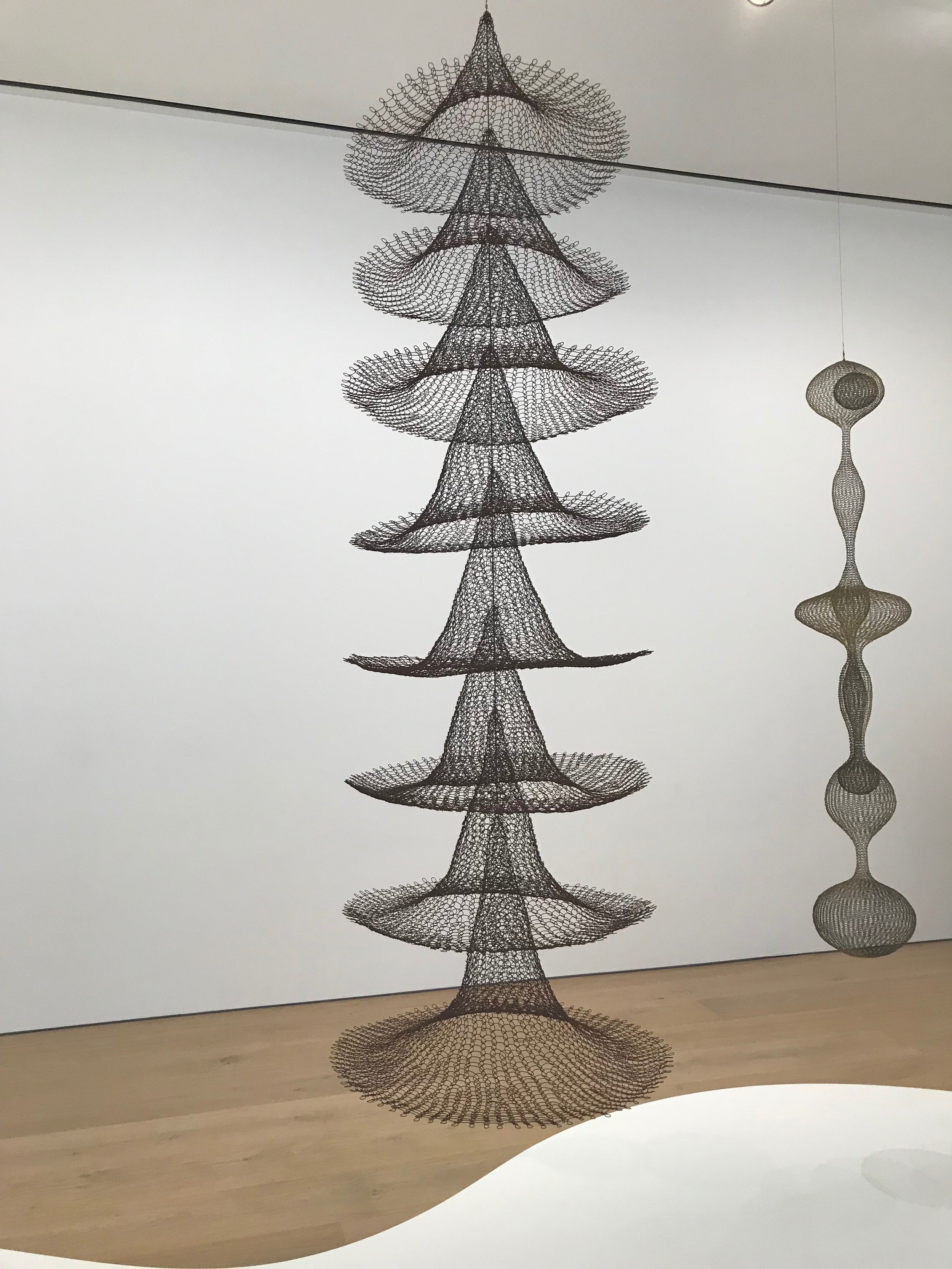




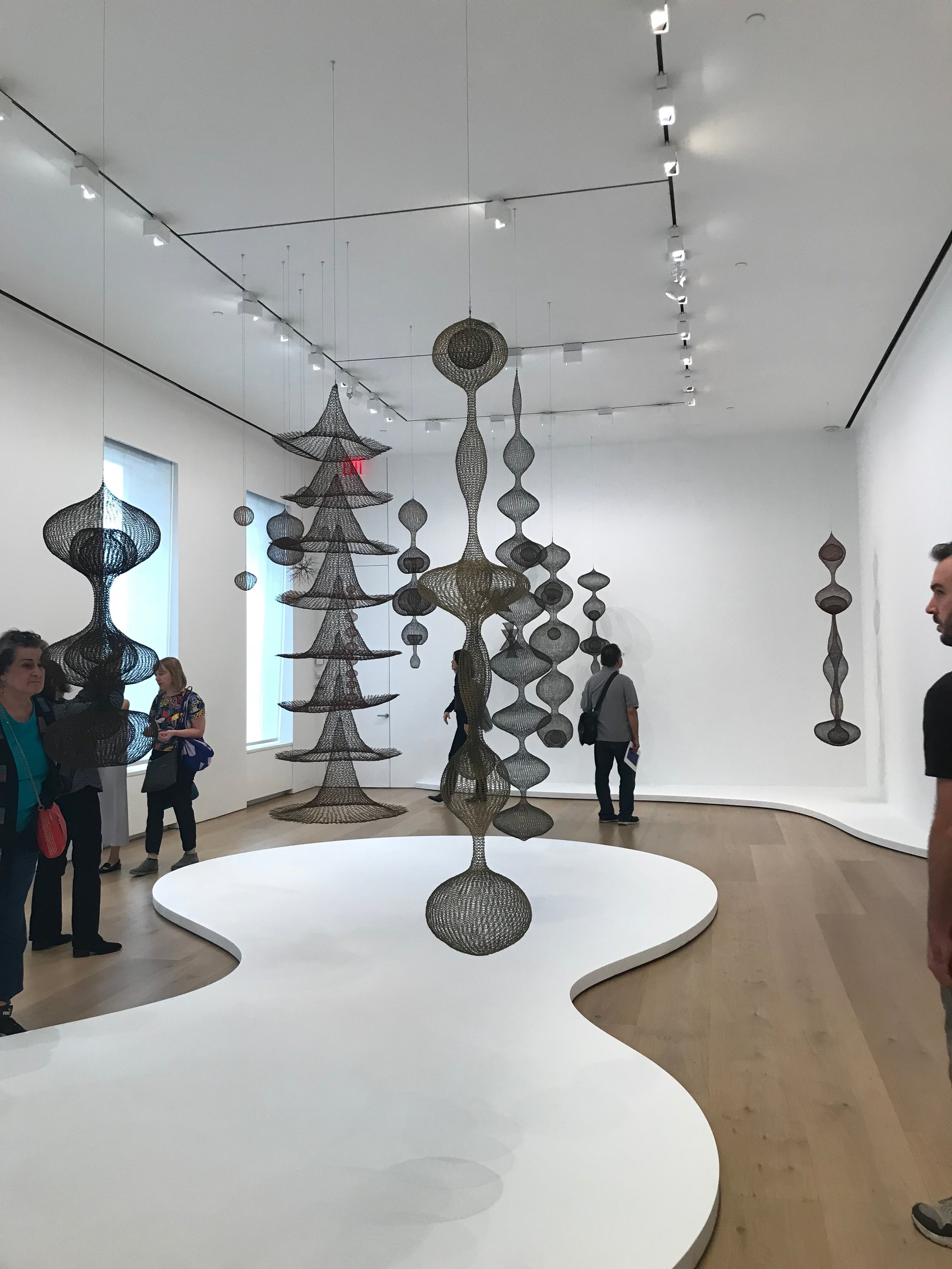
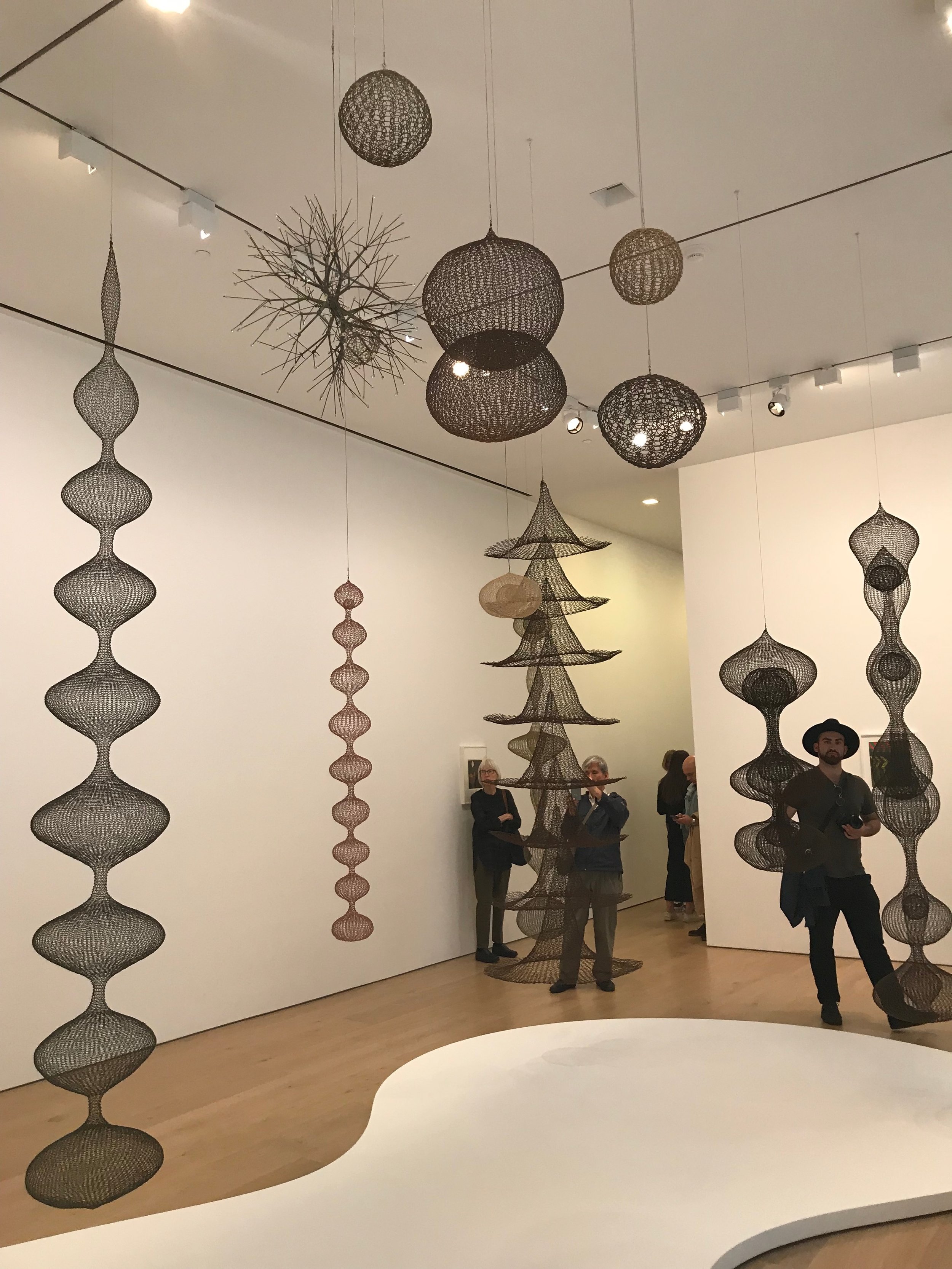

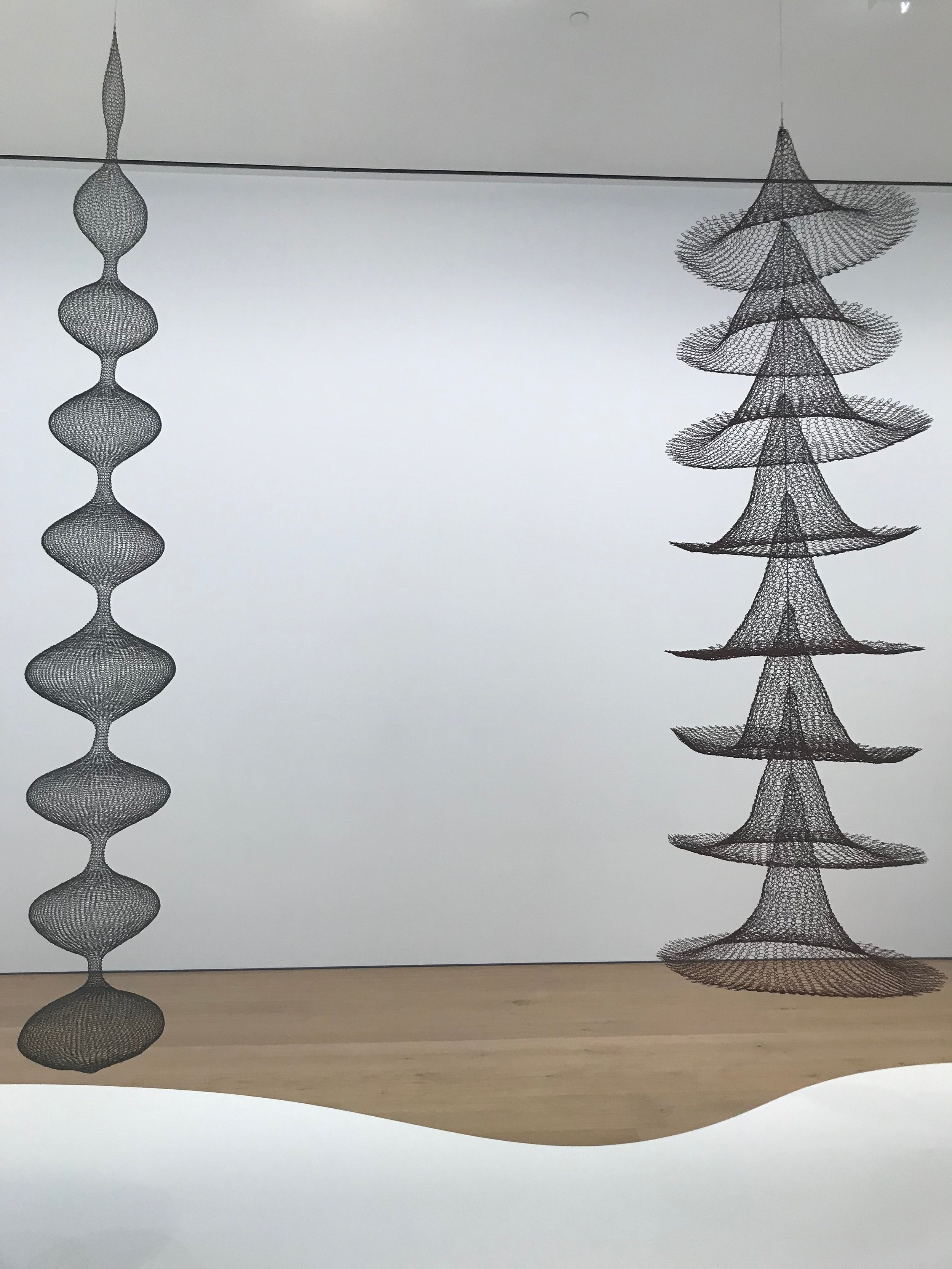
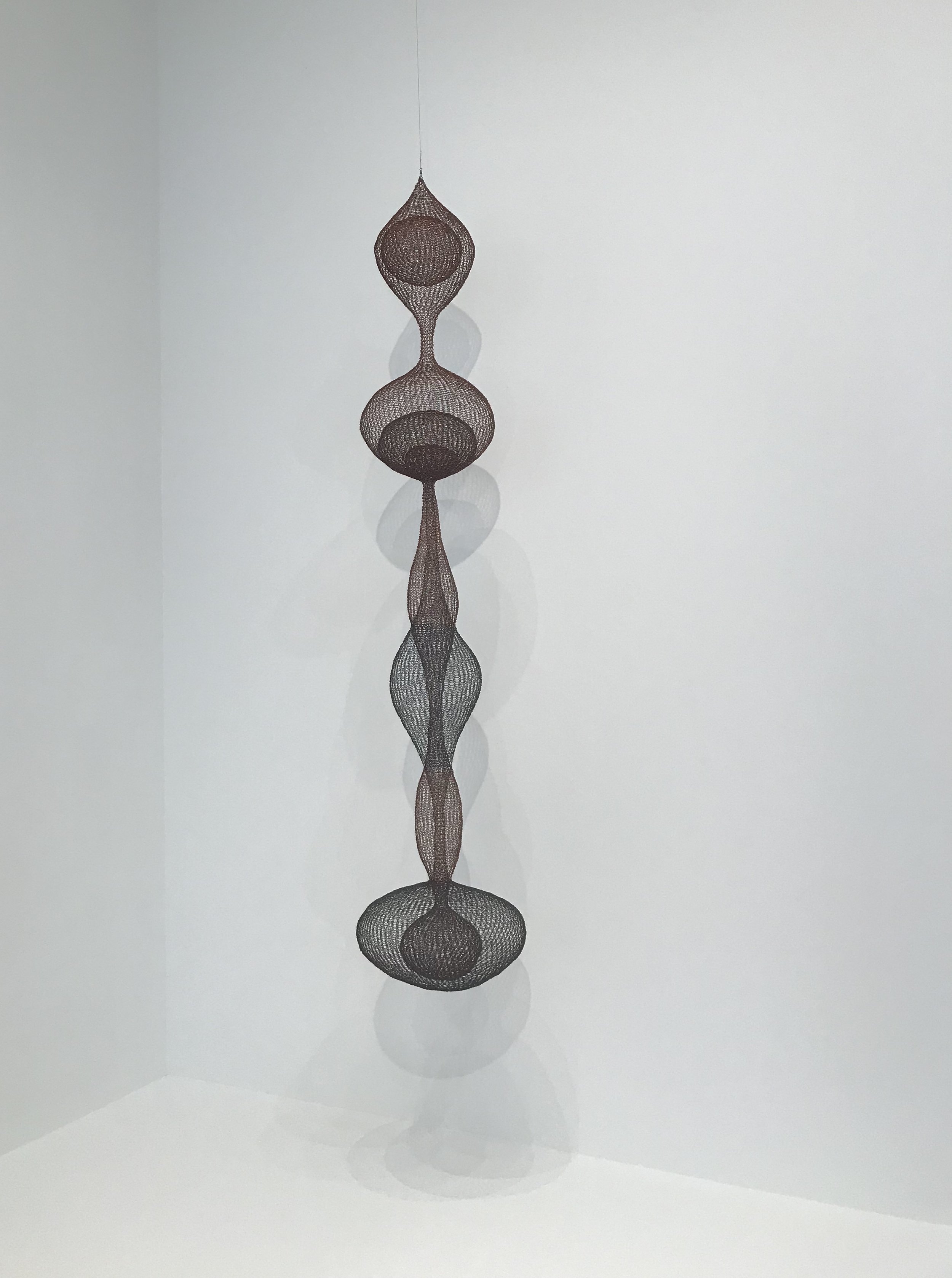
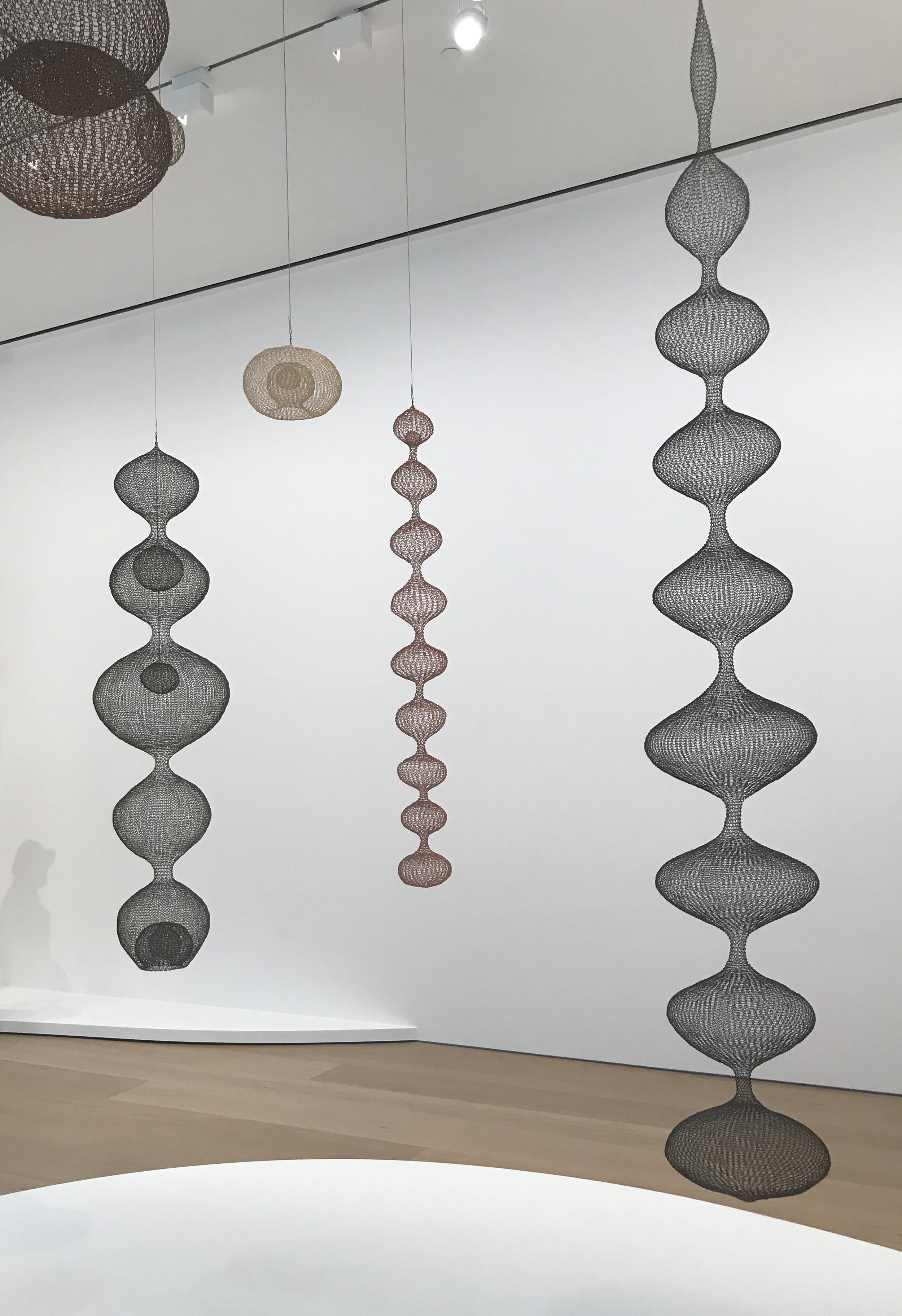
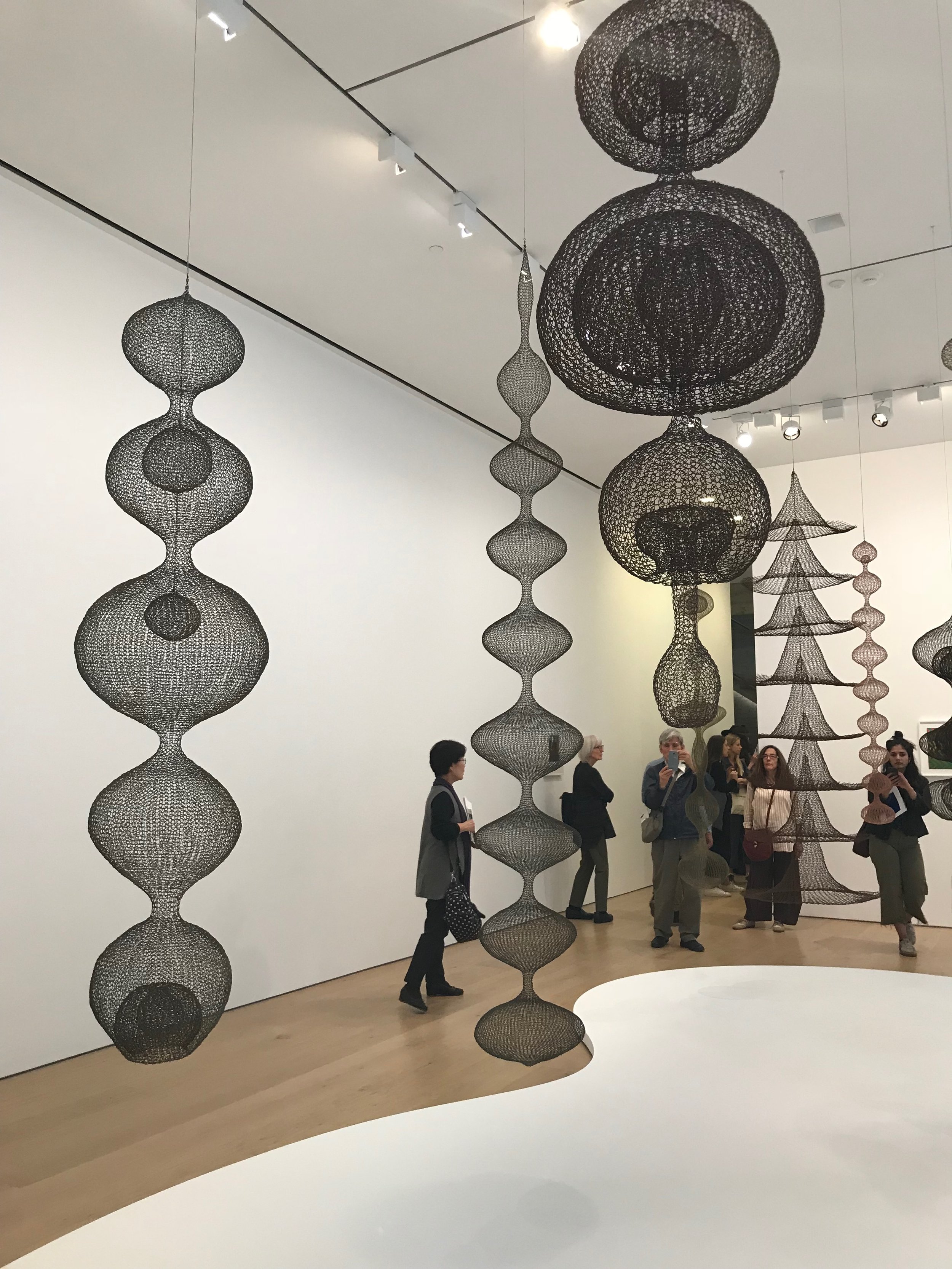
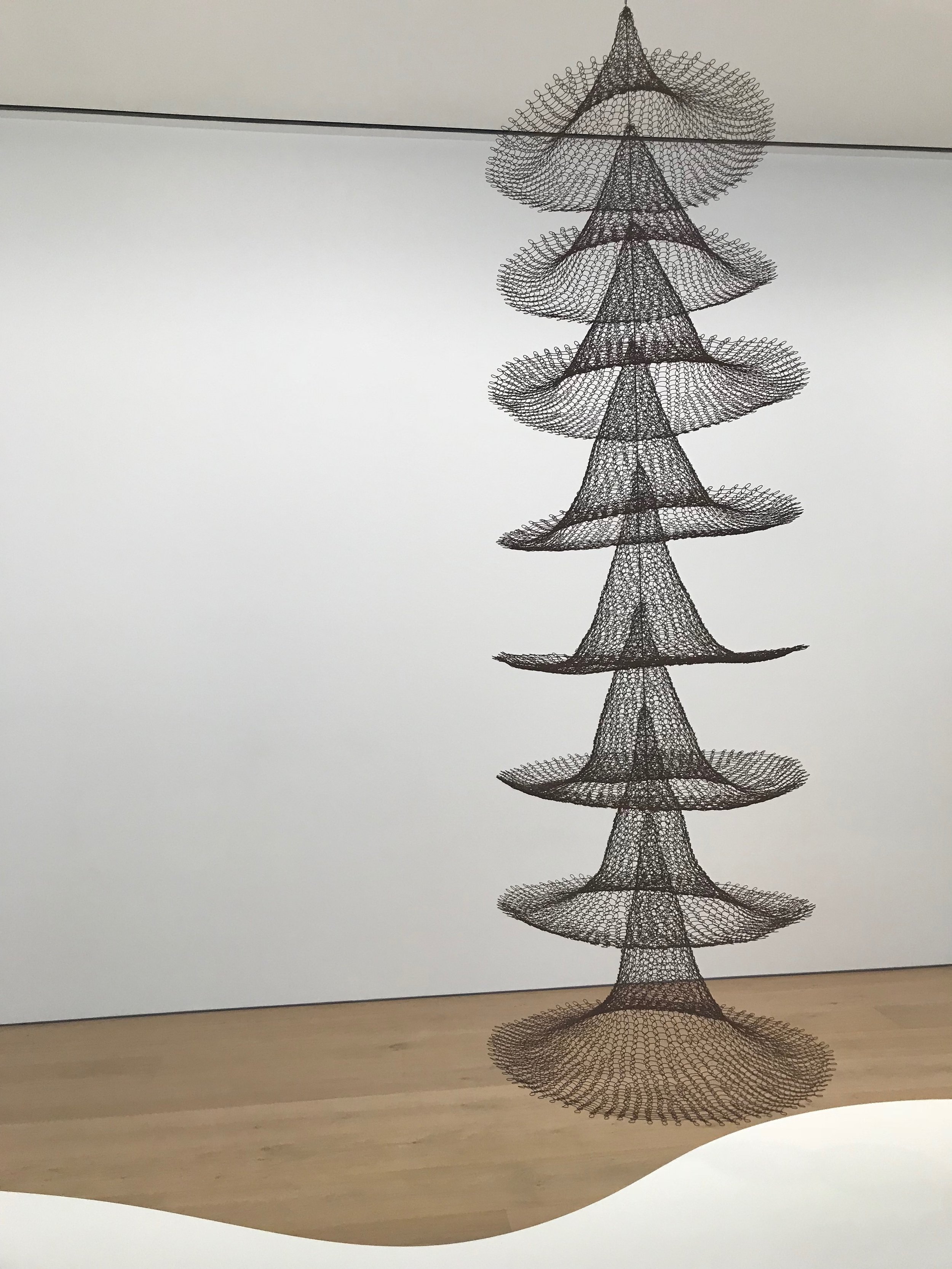
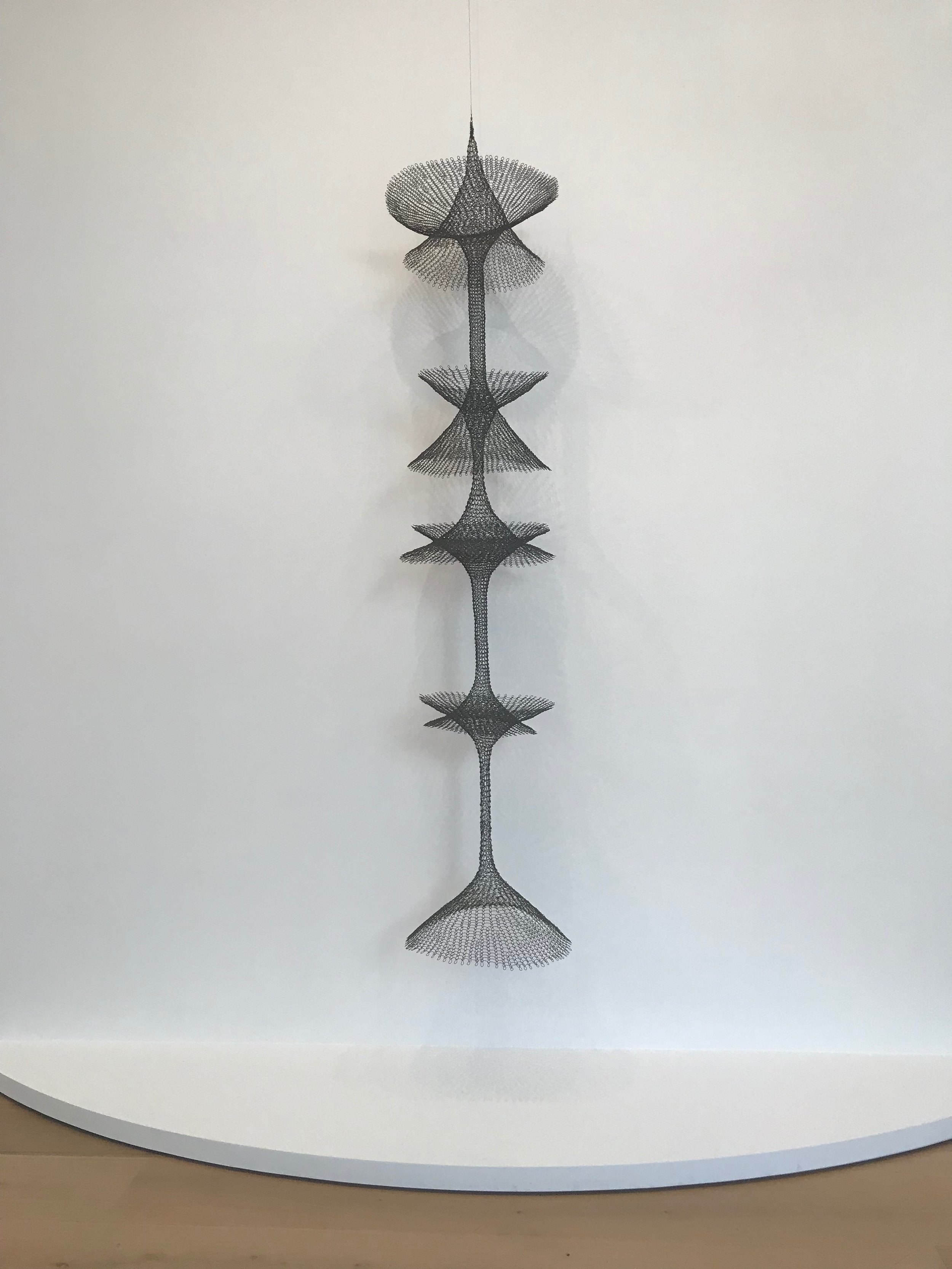
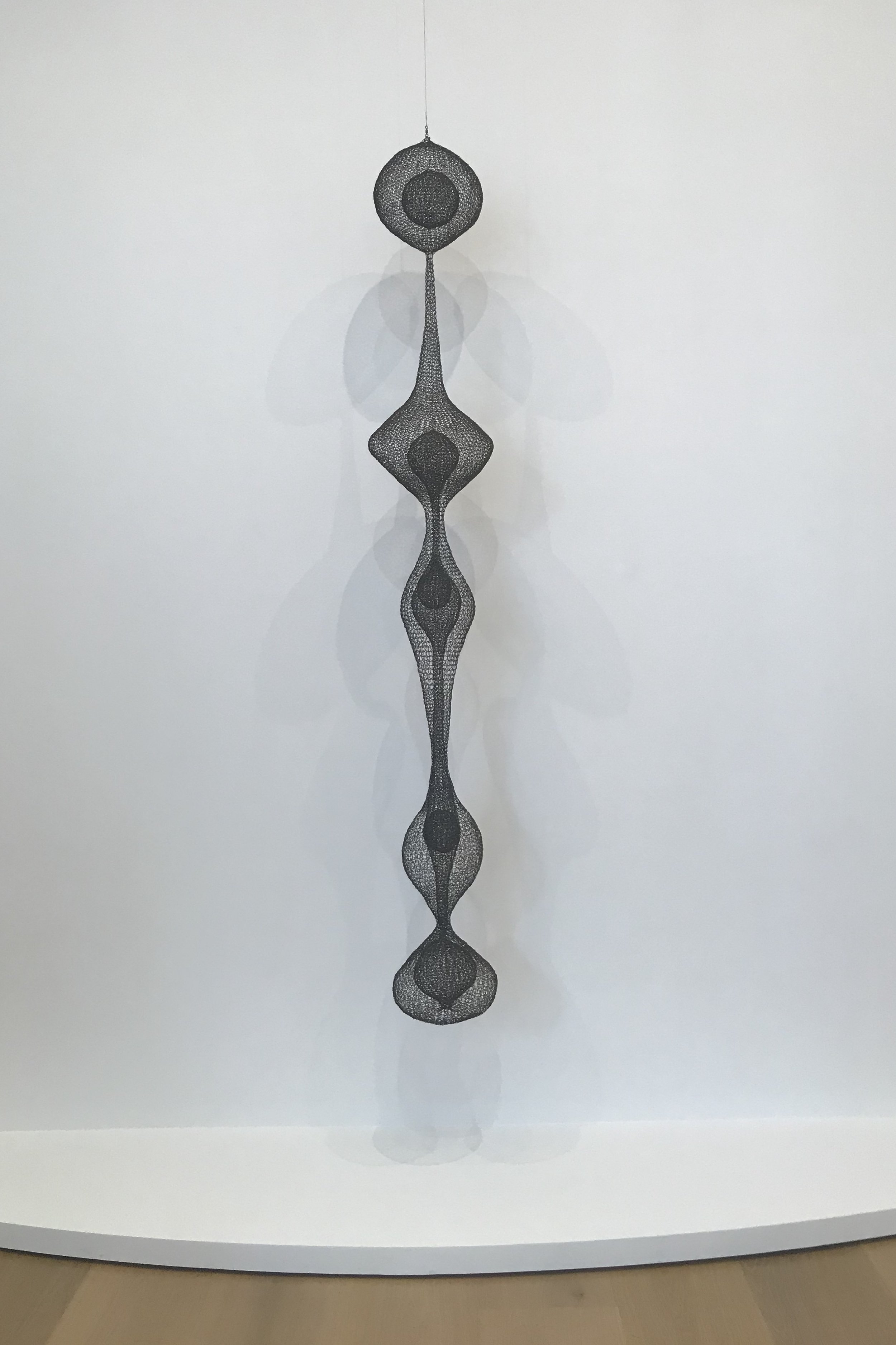
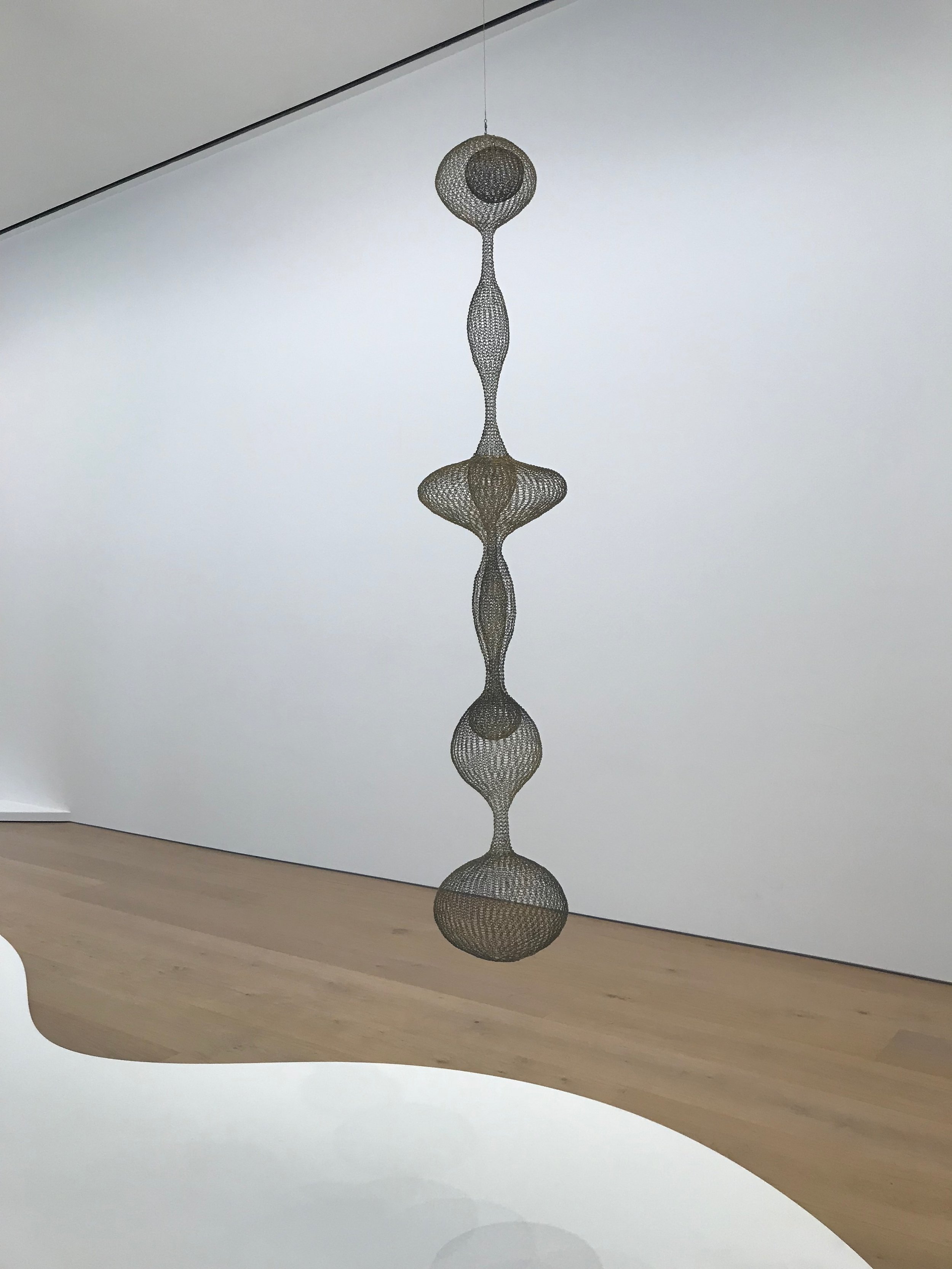

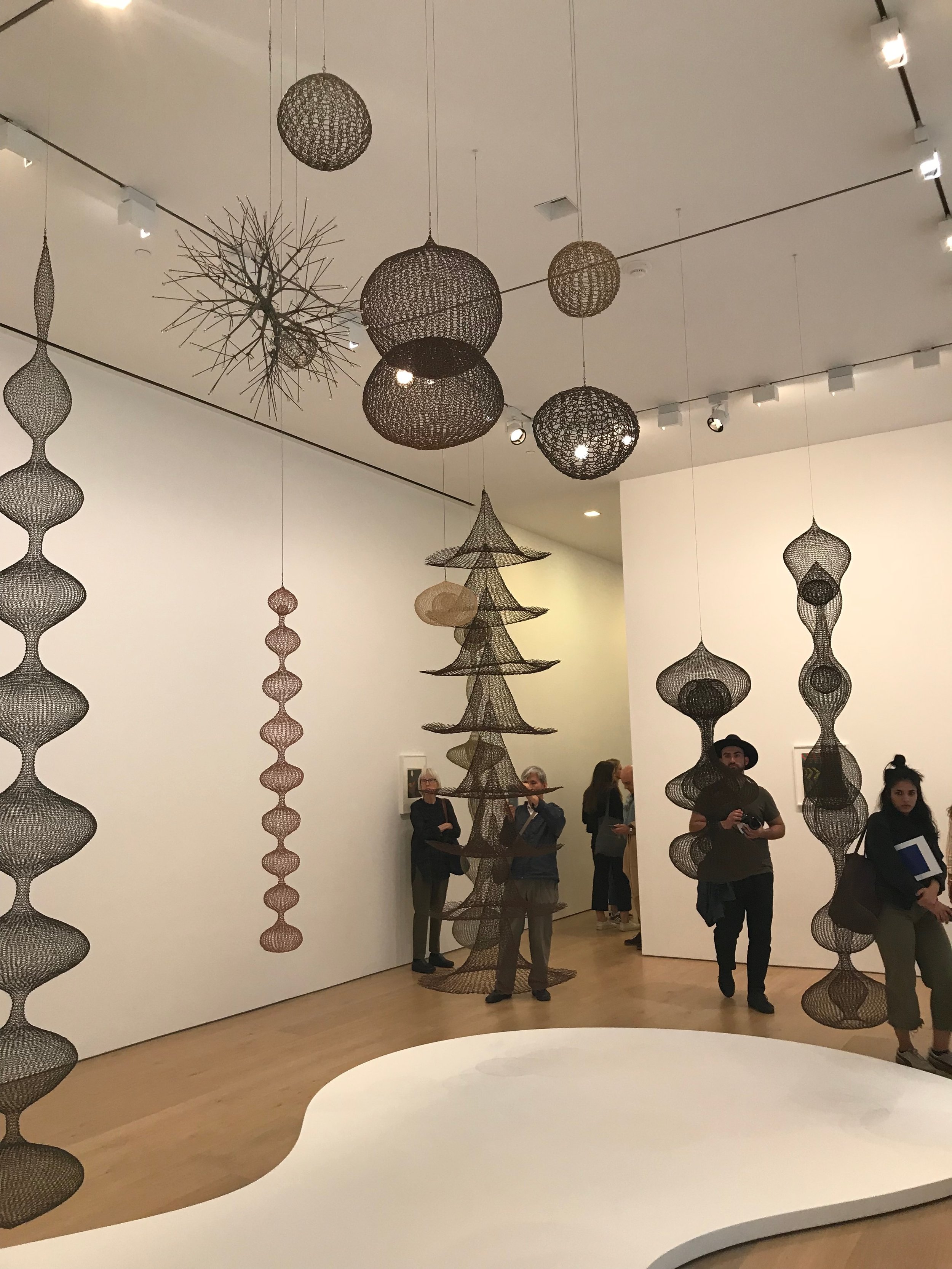
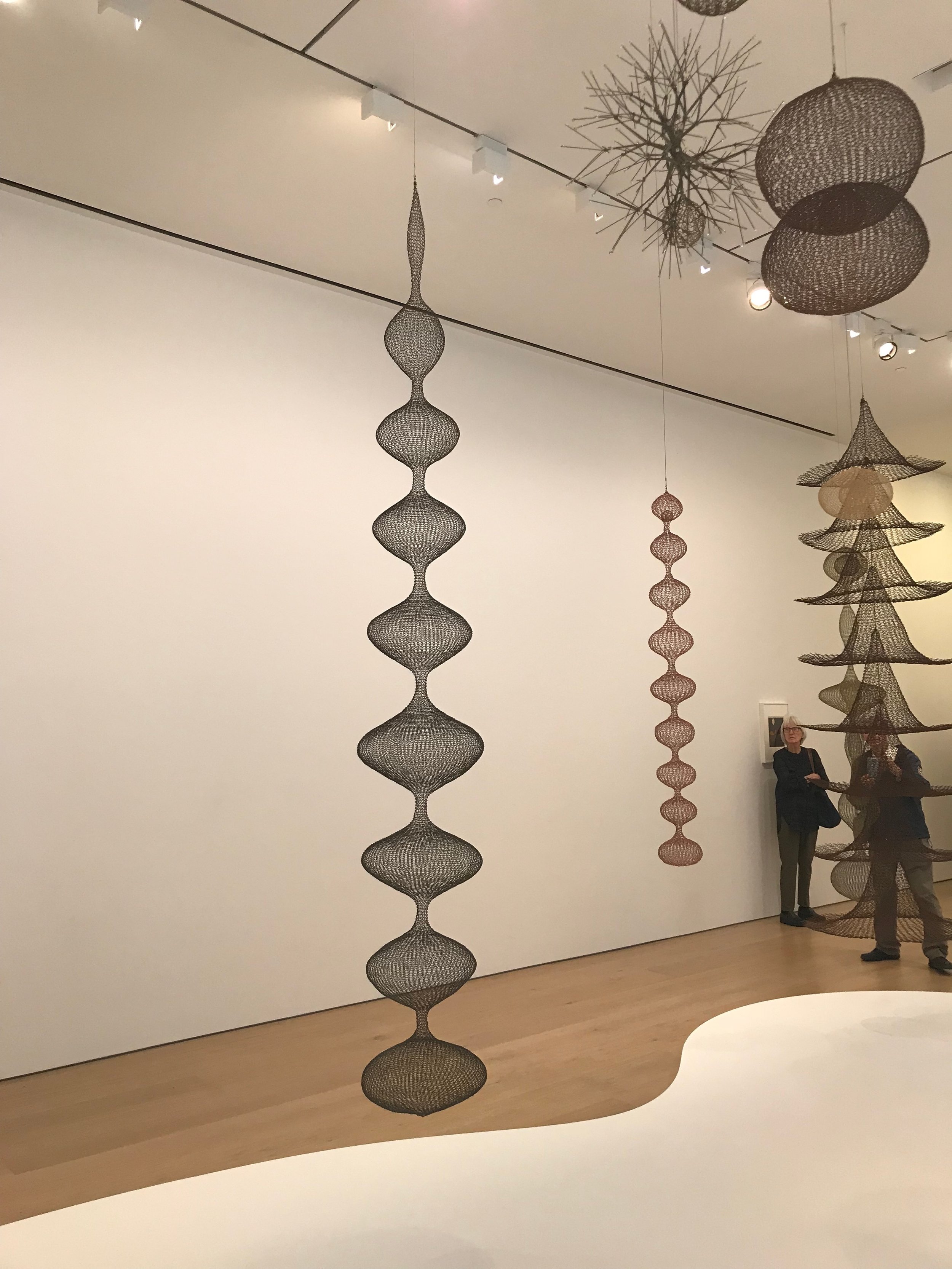
Courtney Bagtazo, © BAGTAZO 2017
BIBLIOGRAPHY
RUTH ASAWA (HOMEPAGE), 2017
DAVID ZWIRNER (HOMEPAGE): RUTH ASAWA, 2017
THE LIVES THEY LIVED: RUTH ASAWA. ROBERT SULLIVAN, THE NEW YORK TIMES, 2013


